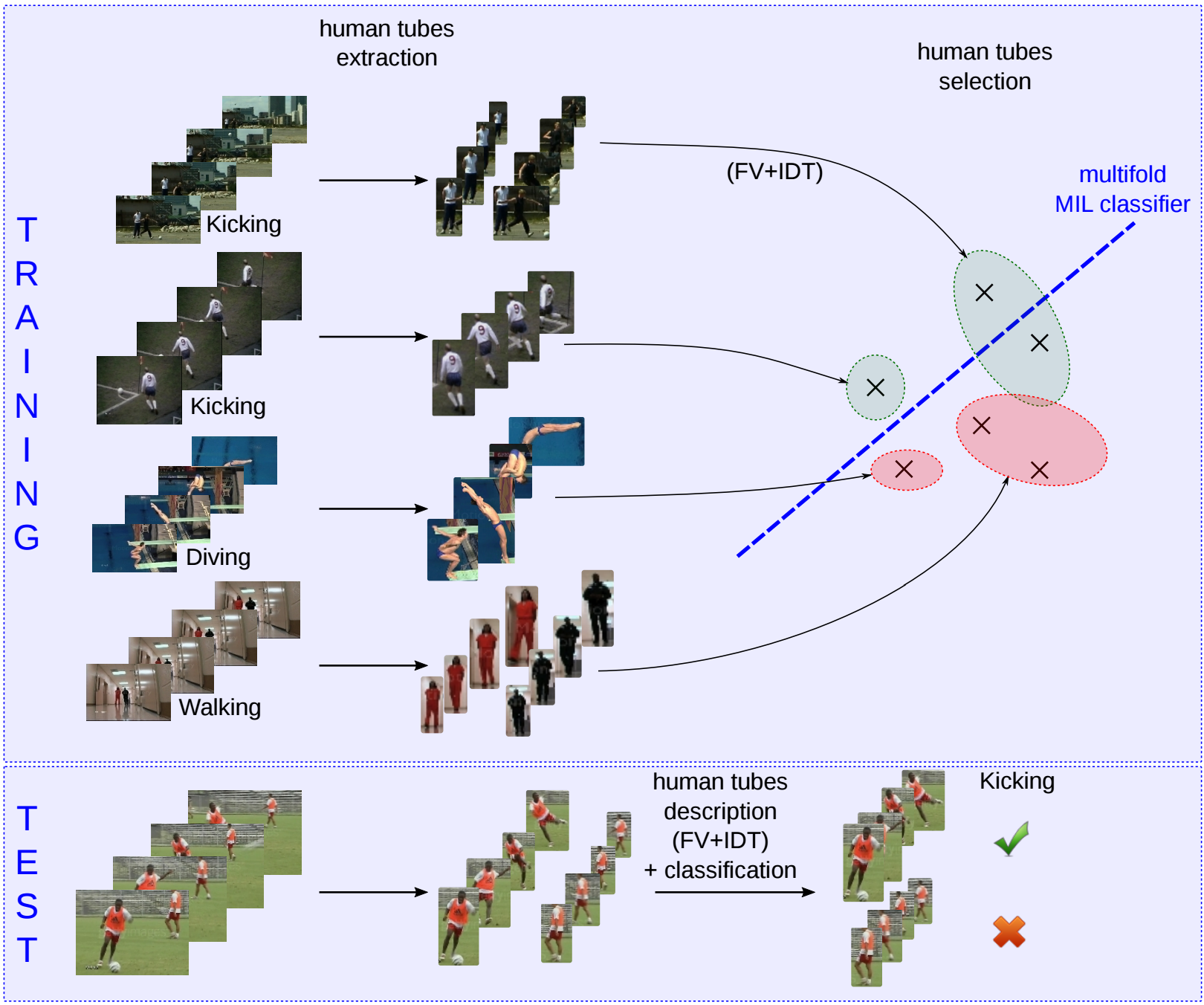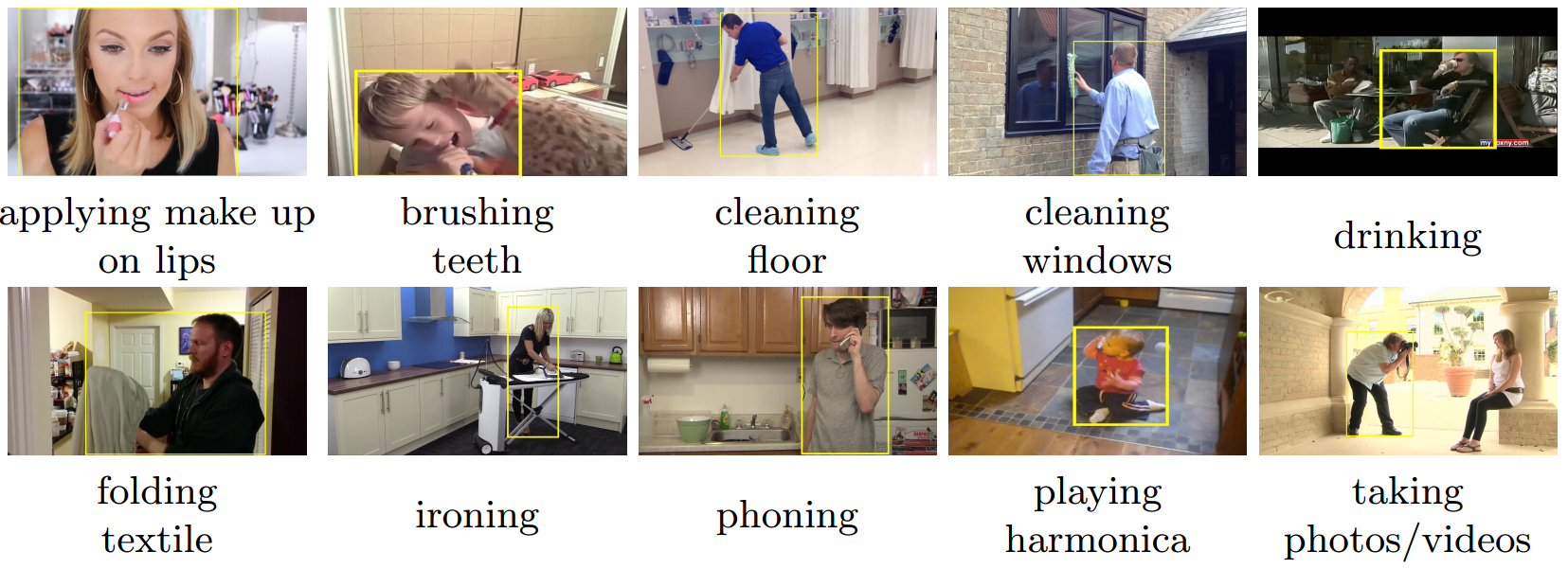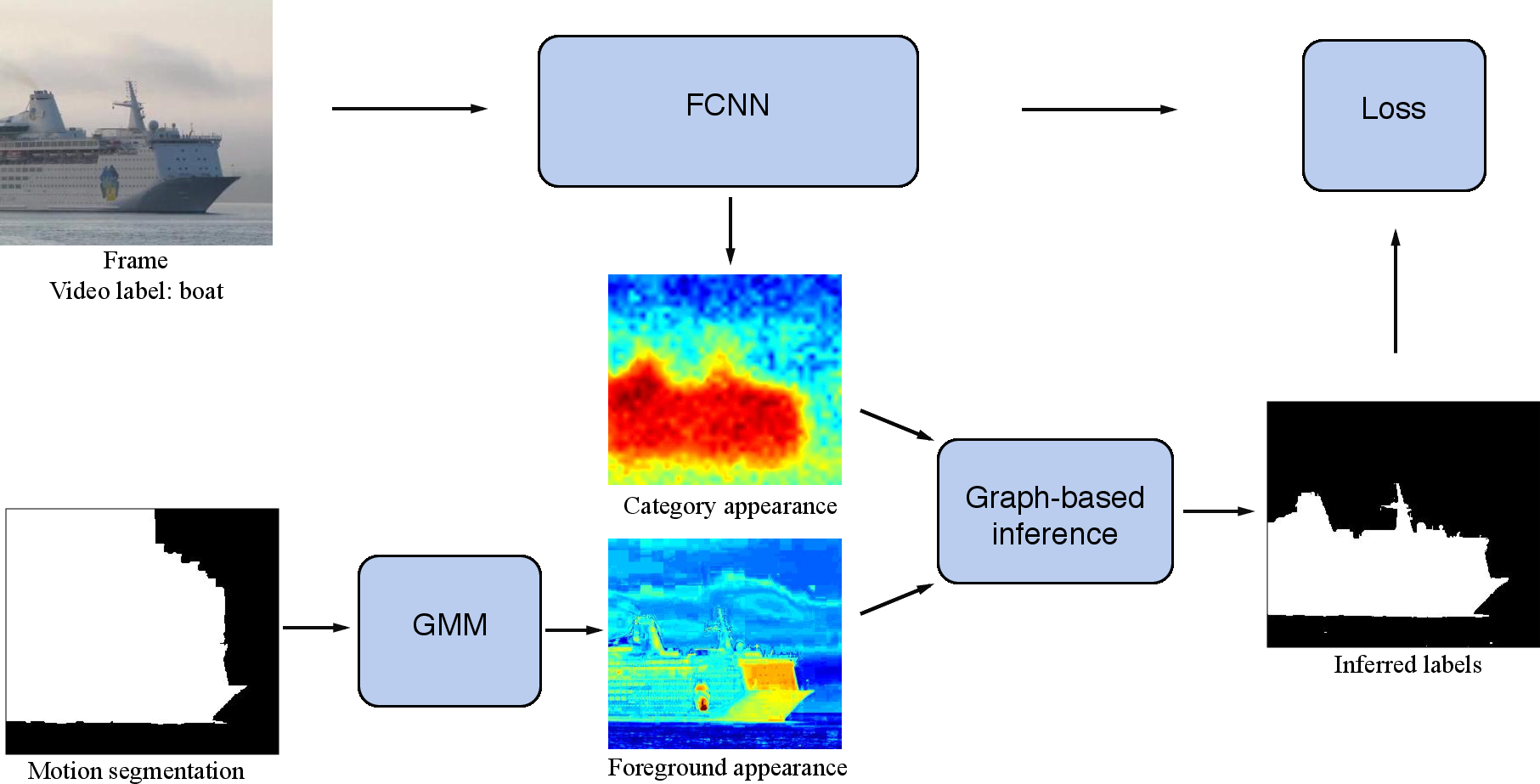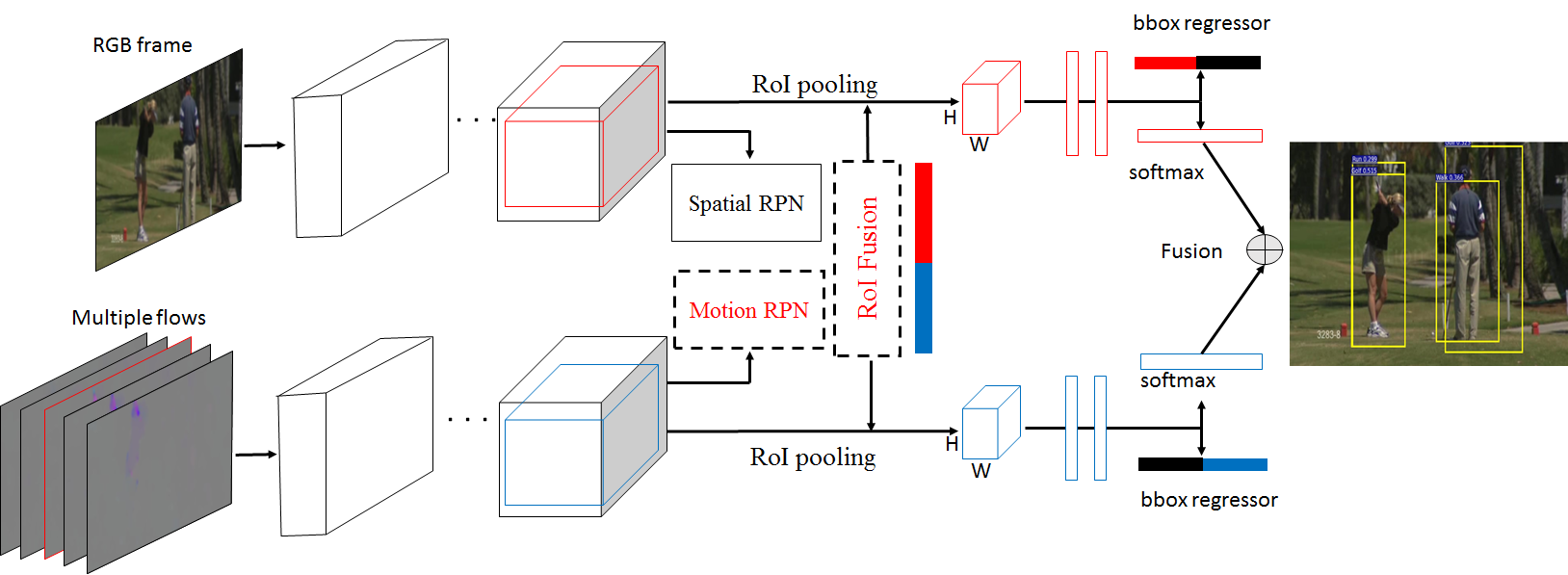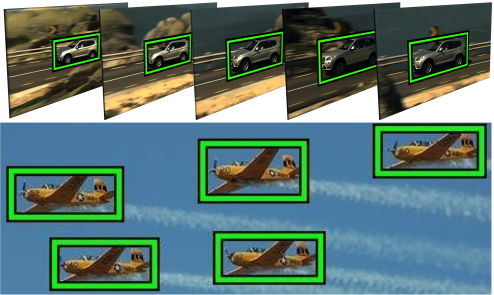Section: New Results
Visual recognition in videos
Towards Weakly-Supervised Action Localization
Participants : Philippe Weinzaepfel, Xavier Martin, Cordelia Schmid.
In this paper [33], we present a novel approach for weakly-supervised action localization, i.e., that does not require per-frame spatial annotations for training. We first introduce an effective method for extracting human tubes by combining a state-of-the-art human detector with a tracking-by-detection approach. Our tube extraction leverages the large amount of annotated humans available today and outperforms the state of the art by an order of magnitude: with less than 5 tubes per video, we obtain a recall of 95% on the UCF-Sports and J-HMDB datasets. Given these human tubes, we perform weakly-supervised selection based on multi-fold Multiple Instance Learning (MIL) with improved dense trajectories and achieve excellent results. Figure 8 summarizes the approach. We obtain a mAP of 84% on UCF-Sports, 54% on J-HMDB and 45% on UCF-101, which outperforms the state of the art for weakly-supervised action localization and is close to the performance of the best fully-supervised approaches. The second contribution of this paper is a new realistic dataset for action localization, named DALY (Daily Action Localization in YouTube). It contains high quality temporal and spatial annotations for 10 actions in 31 hours of videos (3.3M frames), which is an order of magnitude larger than standard action localization datasets. On the DALY dataset, our tubes have a spatial recall of 82%, but the detection task is extremely challenging, we obtain 10.8% mAP.
The DALY dataset
Participants : Philippe Weinzaepfel, Xavier Martin, Cordelia Schmid.
We introduce a new action localization dataset named DALY (Daily Action Localization in YouTube). DALY consists of more than 31 hours of videos (3.3M frames) from YouTube with 10 realistic daily actions, see Figure 9, and 3.6k spatio-temporal instances. Annotations consist in the start and end time of each action instance, with high-quality spatial annotation for a sparse subset of frames. The task is to localize relatively short actions (8 seconds in average) in long untrimmed videos (3min 45 in average). Furthermore, it includes videos with multiple humans performing actions simultaneously. It overcomes the limitations of existing benchmarks that are limited to trimmed or almosttrimmed videos with specific action types, e.g. sports only, showing in most cases one human per video.
Weakly-Supervised Semantic Segmentation using Motion Cues
Participants : Pavel Tokmakov, Karteek Alahari, Cordelia Schmid.
Fully convolutional neural networks (FCNNs) trained on a large number of images with strong pixel-level annotations have become the new state of the art for the semantic segmentation task. While there have been recent attempts to learn FCNNs from image-level weak annotations, they need additional constraints, such as the size of an object, to obtain reasonable performance. To address this issue, in [23] we present motion-CNN (M-CNN), a novel FCNN framework which incorporates motion cues and is learned from video-level weak annotations. Our learning scheme to train the network uses motion segments as soft constraints, thereby handling noisy motion information, as shown in Figure 10. When trained on weakly-annotated videos, our method outperforms the state-of-the-art EM-Adapt approach on the PASCAL VOC 2012 image segmentation benchmark. We also demonstrate that the performance of M-CNN learned with 150 weak video annotations is on par with state-of-the-art weakly-supervised methods trained with thousands of images. Finally, M-CNN substantially outperforms recent approaches in a related task of video co-localization on the YouTube-Objects dataset.
|
Multi-region two-stream R-CNN for action detection
Participants : Xiaojiang Peng, Cordelia Schmid.
This work [18] introduces a multi-region two-stream R-CNN model for action detection, see Figure 11. It starts from frame-level action detection based on faster R-CNN and makes three contributions. The first one is the introduction of a motion region proposal network (RPN) complementary to a standard appearance RPN. The second is the stacking of optical flow over several frames, which significantly improves frame-level action detection. The third is the addition of a multi-region scheme to the faster R-CNN model, which adds complementary information on body parts. Frame-level detections are linked with the Viterbi algorithm, and action are temporally localized with the maximum subarray method. Experimental results on the UCF-Sports, J-HMDB and UCF101 action detection datasets show that the approach outperforms the state of the art with a significant margin in both frame-mAP and video-mAP.
Analysing domain shift factors between videos and images for object detection
Participants : Vicky Kalogeiton, Vittorio Ferrari [Univ. Edinburgh] , Cordelia Schmid.
Object detection is one of the most important challenges in computer vision. Object detectors are usually trained on bounding-boxes from still images. Recently, video has been used as an alternative source of data. Yet, for a given test domain (image or video), the performance of the detector depends on the domain it was trained on. In this paper [7], we examine the reasons behind this performance gap. We define and evaluate different domain shift factors (see Figure 12): spatial location accuracy, appearance diversity, image quality and aspect distribution. We examine the impact of these factors by comparing performance before and after factoring them out. The results show that all four factors affect the performance of the detectors and their combined effect explains nearly the whole performance gap.



